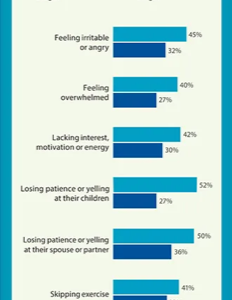It’s that time of year when many consider aspirational goals for the next calendar cycle. New Year’s resolutions don’t work for everyone, but they do work for some, and nearly everyone at some point in their life considers how to make positive changes via new habits. Therefore, while this blog is prompted by the beginning of the new year, these reflections are valid all year long and support positive change in any domain and at any time.
Resolutions are goals, and goals are achieved by habits. Without habits and systems, goals are useless. So, to support you in whatever goals you have, here are what some writers (and deep ponderers of habits) have to say about things.
In order of literary appearance, here are synopses of three popular books on the topics:
In 2012, Charles Duhigg published The Power of Habit, a widely acclaimed book that delves into the psychology research and data behind how habits are formed and embedded into daily routines. Duhigg highlights several key insights:
- The Habit Loop: Habits are reinforced through a cycle of cue → routine → reward → cue. Environmental conditions often serve as powerful cues, while rewards—no matter how small—enhance the longevity of a habit. A lot of emphasis in placed in this book and others around modifying one’s environment to prime for good habits and to help achieve goals.
- Spillover Habits: Some habits, referred to as “spillover” or “keystone” habits, have a disproportionately positive impact across multiple areas of life. For example, regular exercise often leads to improved sleep, better dietary choices, and increased productivity.
- Habits Beyond the Individual: Duhigg extends the concept of habits to organizations and societies, emphasizing that workplace cultures are largely shaped by the values and habits their systems encourage and reinforce.
Through these points, The Power of Habit sheds light on how both individuals and groups can harness the power of habits to drive meaningful change.
You might not guess it from the title, but Gretchen Rubin’s 2015 book Better than Before is all about habit formation. Packed with practical tips and supported by nods to the science behind them, the book dives deep into building better habits—and also into breaking bad ones. Beyond the sheer volume of tips and tricks, Rubin highlights two particularly important points:
- Bad habits matter: Tackling harmful habits is just as critical as creating and sustaining good ones.
- Habits shape identity: Building an identity around a habit can significantly improve long-term retention. For example, seeing yourself as “someone who exercises regularly” reinforces consistency more than merely setting a goal to go to the gym more often.
Rubin also earns credit in my book for emphasizing the importance of the foundational practices of good sleep, a healthy diet, and regular exercise. These are essential not just for achieving goals but for overall well-being—and the science backs her up (PMC4426706; Harvard Health; PMC6971834). I’d go one step further: these pillars aren’t just foundational—they’re mutually reinforcing. They shouldn’t be treated as à la carte options. For instance, establishing a regular exercise habit can naturally improve sleep quality and promote healthier eating patterns. When we pay attention to all of these areas, we create a positive feedback loop that strengthens our physical and mental health, in addition to positioning us to achieve our goals and sustain meaningful, fulfilling careers. While Duhigg introduced the idea of spillover habits, Rubin takes it a step further and specifically makes the case for good sleep, good diet, and regular exercise as key spillover habits to latch onto to make other habits more likely to stick.
Finally, we have James Clear’s Atomic Habits, an ongoing blockbuster since its debut in 2018, which reliably reclaims the spotlight every January as people set their New Year’s resolutions. Like Charles Duhigg in The Power of Habit, Clear emphasizes a habit loop of cue, craving, response, and reward. However, he takes the concept further by focusing on the systems that support habits, rather than just the goals they aim to achieve. Goals, Clear argues, simply set the direction; it’s the systems you put in place that determine success. His memorable mantra encapsulates this idea: You don’t rise to the level of your goals; you fall to the level of your systems.
Clear’s core principles include:
- Habits compound over time: Whether good or bad, the effects of habits snowball as they accumulate.
- The 1% Rule: Small, incremental improvements in habits—what I call “sustained micro-growth”—lead to disproportionately large positive changes over time.
- The Four Laws of Behavior Change: To create a habit, make it Obvious (clear cues), Attractive, Easy, and Satisfying.
While many of the ideas in Atomic Habits echo those in The Power of Habit, Clear’s book is widely considered more accessible and practical. It’s packed with actionable strategies that emphasize starting small and manageable. For example, Clear highlights how schedules, existing habits, social networks, and environmental cues can be leveraged to build systems that make good habits stick. His emphasis on consistency over ambition—focusing on small, repeatable steps rather than grandiose efforts—makes his advice particularly effective for sustainable growth. In essence, Atomic Habits is about the small actions (“atomic habits”) that form the building blocks of larger systems. These systems, in turn, create meaningful and lasting change. While it’s difficult to summarize this book in one go, this idea—that small changes which are sustained over time lead to big results—is at the heart of Clear’s philosophy.
Do busy doctors need to read all three books to support their New Year’s resolutions or any career or health goals they set this year? Absolutely not. The key themes shared across these books can be distilled into these actionable insights for those genuinely interested in making meaningful changes:
- Focus on systems, not just goals: While setting clear goals is important, creating systems to support those goals is what leads to sustainable success.
- Cultivate insight: Pay attention to what feels rewarding or painful to help you prioritize and pursue only what is truly meaningful to you.
- Address bad habits: Identify and tackle the habits that sabotage your growth or derail the changes you want to make.
- Optimize your environment: Adjust your physical and social surroundings to align with and support the growth or change you’re aiming for.
- Start small: Consistency matters more than scale. Focus on doing something small, and keep at it all year long—duration beats intensity.





